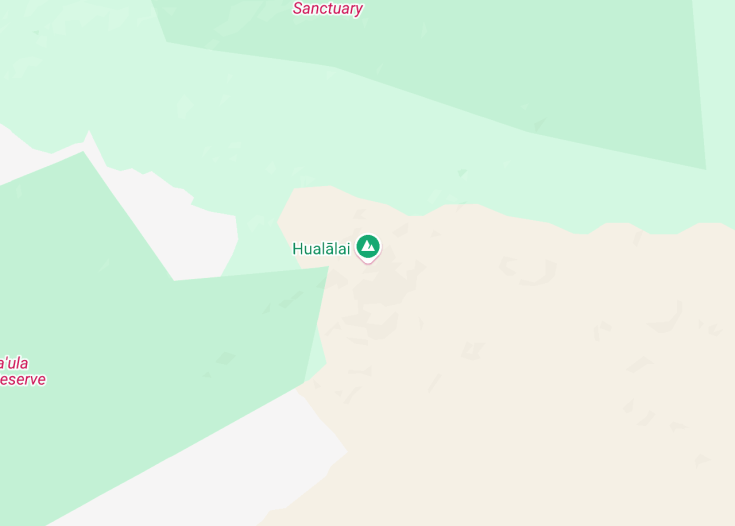Hualālai, located on the west coast of Hawaii’s Big Island, is a dormant volcano that offers a unique blend of natural beauty and geologic significance. The landscape around Hualālai features stark volcanic rock formations, lush vegetation, and panoramic ocean views. It’s an exceptional destination for eco-tourists and adventure seekers alike, providing an opportunity to experience the vibrant ecosystem and the cultural heritage of Hawaii. The area is known for its serene environment and the luxurious resorts that dot the coastline, offering a perfect balance of relaxation and adventure.
When visiting Hualālai, be sure to wear appropriate hiking shoes. The terrain can be rugged and uneven, but the scenic views and unique geological features are worth the effort.
Consider planning your visit to Hualālai during the drier months from May to October for optimal weather conditions, enhancing your outdoor experiences and exploration.
Hualālai: A Volcanic Wonder
Hualālai, located on the Island of Hawaii, is one of the most captivating active volcanoes in the Hawaiian archipelago. As the third-youngest and third-most active of these volcanic giants, it last erupted in 1801, offering a unique blend of geological beauty and historical significance. The allure of Hualālai extends beyond its volcanic activity; the lush landscapes and stunning vistas that surround the area make it a must-visit destination for nature lovers and adventure enthusiasts. Its slopes are dotted with luxury resorts that blend seamlessly into the natural environment, offering visitors a perfect mix of comfort and adventure.
The mountain itself provides bountiful opportunities for hiking, bird watching, and sightseeing, with trails that navigate through ancient lava flows and rugged terrains showcasing breathtaking views of the Pacific Ocean. Tourism plays a significant role in the local economy, as visitors come to marvel at the earth’s raw power and explore the rich cultural heritage of the region.
Exploring the Natural Beauty of Hualālai
Hualālai’s environment is perfect for those looking to immerse themselves in nature. The Kona Coffee Living History Farm located on its slopes gives a historical perspective on the area’s famous coffee cultivation, framed by the stunning backdrop of volcanic landscapes. For those interested in geology and volcanology, the opportunity to explore the unique volcanic features, including vent structures and ancient lava tubes, is engaging. Adventurous visitors can hike sections of the volcano where guided tours reveal the rich flora and fauna of this distinct ecosystem. Vibrant photography enthusiasts will also find themselves at home, capturing the dynamic landscapes.
A Glimpse into Hualālai’s Last Eruption
The last known eruption of Hualālai in 1801 is a key event in its rich volcanic history. This eruption was characterized by the effusion of alkali basalt lava, significantly influencing the landscape and local settlements. The remnants of these flows provide a tangible link to the past, marking trails and viewpoints that tell the story of a restless earth. These historic sites are not just important geologically but are also imbued with cultural lore, offering a glimpse into the native Hawaiian traditions and resilience in the face of natural adversity. Today, Hualālai stands as a symbol of natural beauty and cultural endurance, inviting explorers and scientists alike to study and appreciate its grandeur.
Explore the wonders of Hualālai
Hualālai is a premier destination that promises an extraordinary experience for all age groups, particularly appealing to couples seeking a romantic getaway and individuals interested in eco-tourism and outdoor activities. Visitors can expect a blend of natural beauty, rich Hawaiian culture, and luxurious amenities that make every moment spent here truly unforgettable.
Discover the ideal seasons to visit Hualālai
Visiting Hualālai is particularly magical during the dry seasons, from April to October, when the weather is most favorable for outdoor activities. However, for those who delight in vibrant cultural experiences, the “King Kamehameha Day Celebration” held annually in June is a spectacular time to visit.
Annual events not to be missed
Join in the festivities of King Kamehameha Day, featuring parades, hula dancing, and Hawaiian music, providing an immersive experience into the local tradition.
Accessibility and limitations at Hualālai
While Hualālai is dedicated to providing a welcoming environment for all guests, there are certain limitations to consider.
Accessibility
Limitations
- Private areas strictly for resort guests only
- Certain areas may be inaccessible during special events or due to weather conditions
Notes to visitors
- Advanced reservations are recommended for certain tours and activities
- Pet restrictions are in place, with exceptions for service animals
General information
Things to know before your visit to Hualālai
Location insights
Hualālai is nestled on the picturesque Kona Coast, surrounded by expansive coffee plantations and historic sites, providing a remarkable setting for visitors.
Address:
72-100 Ka’upulehu Drive, Kailua-Kona, HI 96740
Visiting hours
Hualālai is open year-round from 9 AM to 6 PM, except on major holidays when different hours may apply.
Traveling to Hualālai
Reaching Hualālai is convenient whether you are flying in or driving from a nearby area.
Car
Driving to Hualālai offers scenic views and the flexibility of exploration. Ample parking is available on-site.
| Route | Distance | Travel time |
|---|---|---|
| From Kona International Airport | 8 miles (13Km) | 15 minutes |
| From Waikoloa Village | 24 miles (39Km) | 35 minutes |
Bus
Local bus services connect with major nearby towns, with direct connections to the resort area.
| Route | Direct/Transfer |
|---|---|
| From Kona | Direct |
Nearby Attractions
Explore nearby attractions around Hualālai:
- Hapuna Beach State Park – 37 miles (59.5 km)
- Akaka Falls State Park – 58 miles (93.3 km)
- Mauna Kea Observatory – 94 miles (151 km)
- Puuhonua O Honaunau National Historical Park – 40 miles (64.4 km)
- Kona Coffee Living History Farm – 15 miles (24.1 km)
- Waikoloa Beach Resort – 35 miles (56.3 km)
Common questions
What is the geological history of Hualālai?
What types of flora and fauna can be found on Hualālai?
Are there any hiking trails on Hualālai?
What is the cultural significance of Hualālai to native Hawaiians?
What are the ideal months to visit Hualālai for good weather?
Can you observe volcanic activity on Hualālai?
Are there any ecological or conservation projects on Hualālai that visitors can participate in?
What is recommended gear for exploring the volcanic terrain of Hualālai?
What is the impact of tourism on Hualālai's environment?
Can you explain the volcanic features unique to Hualālai?
How does Hualālai contribute to Hawaii's climate?
What safety precautions should be taken when exploring Hualālai?

Is Hualālai in Kalaoa worth visiting?
When pondering whether Hualālai in Kalaoa is worth a visit, potential tourists should consider what they seek in a travel experience. Known for its breathtaking volcanic landscapes and the opportunity for serene hikes, Hualālai caters chiefly to those who appreciate nature and outdoor activities. The area is not only a geological marvel but also a spot of significant historical and cultural importance in Hawaii.
However, one should be aware that the terrain can be challenging. Accessibility may be limited for those who are not accustomed to rugged paths or do not prefer physically demanding activities. Despite this, the stunning views and the tranquility of the site provide a rewarding experience for those ready to explore off the beaten path. Hualālai is ideal for the adventurous spirit looking to delve into the natural and cultural wealth of Hawaii.









